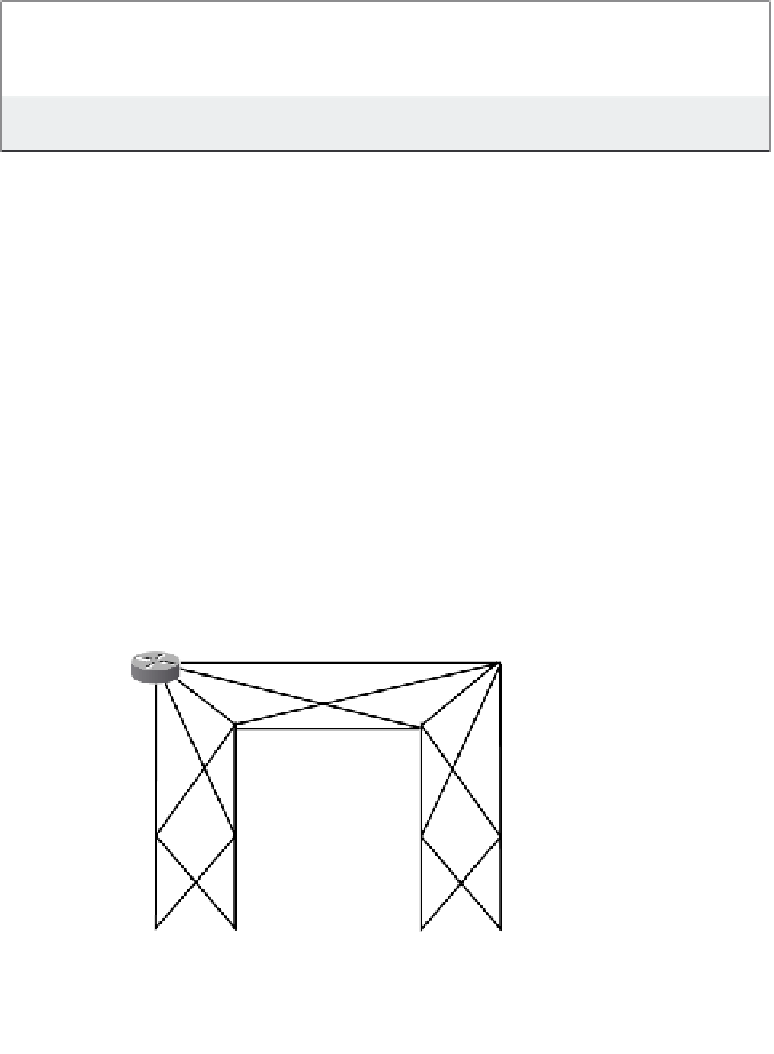Information Technology Reference
In-Depth Information
CLUSTER_LIST Breaks the Loops on R5
Example 7-3
Route Reflector cluster loop; Received cluster-id 192.168.1.1
rcv UPDATE w/ attr: nexthop 192.168.1.6, origin i, localpref 100, metric 0,
originator 192.168.1.6, clusterlist 192.168.1.3 192.168.1.2 0.0.0.0, path,
community , extended community
rcv UPDATE about 172.16.0.0/16 -- DENIED due to: CLUSTERLIST contains our own
cluster ID;
Hierarchical Route Reflection
Route reflection reduces the total number of iBGP sessions within a domain. However,
because RRs must be fully meshed with each other, the potential still exists for a large
number of iBGP sessions to be required in a very large network. To further reduce the
number of sessions, RR hierarchies can be introduced.
Hierarchical route reflection architecture is characterized by having more than one level of
RRs, with lower-level RRs serving as the clients of the RRs that are one level above. There
is no limit on the number of levels, but levels of 2 to 3 have proven to make more practical
sense. Figure 7-10 shows a two-level RR architecture, where dashed lines represent levels.
Level 1 RRs are also clients of Level 2 RRs. Because they are clients themselves, Level 1
RRs do not need to be fully meshed with each other. This reduces the number of iBGP
sessions within the domain.
Figure 7-10
Hierarchical Route Reflection
Level 2 RRs
R1
R2
R3
R4
Level 1 RRs/
Clients
R8
R5
R6
R7
R9
R10
R11
R12
Clients
Clients






























